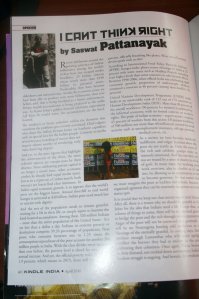
‘Eat Pray Love’ was showing in theaters in India about two weeks ago, and I have to admit, that like most here, I too went to see it just to see how the country looks on the big screen. But the one question that’s been nagging at me since is, “Why did they have to get Tulsi married?”
The seventeen-year-old Indian girl, Tulsi, who Liz Gilbert befriends at the ashram, has a colorful wedding in the film, which she does not in the book. True, films often distort their source to suit the audience’s whims. And a Bollywood style wedding would certainly spice up the visual appeal. Yet I found Tulsi’s wedding to be a symbolic slaughter of the spirit of this book; a mockery of one of its core issues.
Since Liz already travels, explores and writes, doing all she truly loves, what was her big soul-searching journey all about? In her own words: “I don’t want to have a baby,” an issue she wrestles with incessantly. “That deadline of THIRTY loomed over me..and I discovered I did not want to be pregnant.” And again, “I well know what desire feels like. But it [the desire for a child] wasn’t there.” Her real concern about motherhood, it seems is how she would be perceived if she openly admitted she didn’t desire children. She agonizes over how people would “judge” her. “What kind of a person does that make me?” Read the article here on Pickled Politics




